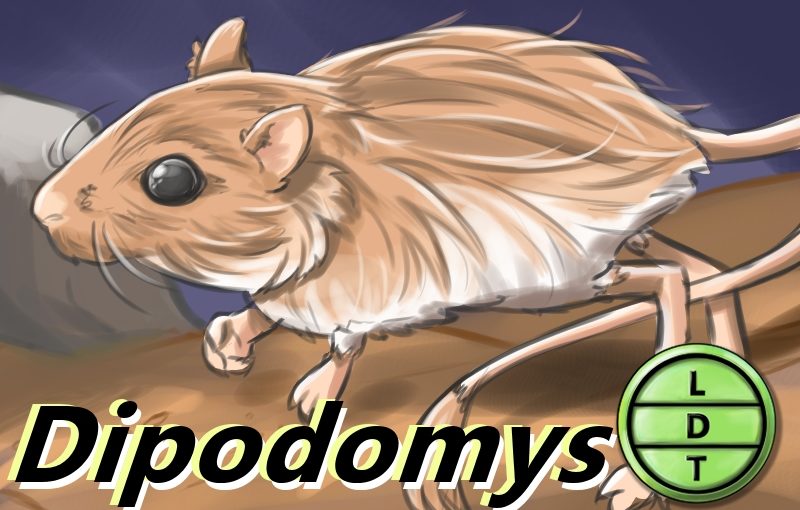“And today we’re talking about a rat that’s metaphorically faster than a speeding bullet. But more on that later.”
In nature, you’re a predator, prey, or both. When you’re small and delicious, you’re probably pretty low on the food chain. But there’s a rodent that lives in Mojave Desert that’s so adapted to dealing with fast predators, they’ve developed some interesting superpowers. If you live in a harsh environment filled with predators that are bigger than you, you’ve got to use every skill in your playbook to survive. But it’s time for the tiny to get tough in Life, Death, and Taxonomy.
Measure Up
Length – Desert kangaroo rats are among the largest species in the genus with a length of – 12 inches (30 cm) – How many DKRs go into the length of Death Valley? (140 miles) Hint: Death Valley is one of the hottest places in the world with a record of 134 °F (56.7 °C). Answer: 739,200
Weight – 3.2oz (91g) – How many kangaroo rats go into the amount of caviar eaten at the Bellagio’s Buffet Bellagio in 2014 (360 pounds)? Hint: 98,719 pounds of crab legs were consumed at the Aria Buffet in the same year. Answer: 1,794.4 rats.
Major Fact
Kangaroo rats are hunted by predators that come in fast and only need one good strike to ensure a victory.
- Their deadliest predators include snakes, coyotes, foxes, badgers, weasels, and owls.
- Because their predators are fast, deadly and usually a lot bigger, they have nearly unparalleled evasive capabilities.
They locomote differently than most rodents.
- The move with bipedal hops. (That means they stand and jump around on two feet.)
- They are reported to jump nine feet in the air and across distances of six feet.
- That’s impressive for a tiny rodent.
- Their jumps can carry them away from danger at 10 feet/sec, or 10 kph (6 mph).
- Between jumps, they can turn on a dime, which helps them confuse predators and evade animals that might be faster than them.
- When they encounter nocturnal predators, they might freeze.
- This is a common response from prey animals because it’s easier to find something that’s moving, especially in the dark.
- If a predator does spot them, they might try stamping their feet to scare them off.
- Unfortunately, that’s more adorable than it is threatening.
- If it doesn’t work, they might try to kick sand in the predators face.
- If it still moves to strike, the kangaroo rat can react extremely quickly.
- They can react and avoid a venomous strike in as little as 34 milliseconds.
- It takes 300 to 400 milliseconds to blink your eye.
- They have extremely sensitive hearing that may allow them to detect surprise attacks and react to them quickly.
- As they jump away from predators they may also deliver ninja-style midair kicks that can knock smaller predators off balance and help to kick off of larger ones.
Outro
Hey listeners, a kangaroo rat evading a predator may be fast but you know what else is fast? An intrepid Taxonomy Titan recording a measure up. It only takes about 30 seconds. That means you could send in your very own measure up intro in the time it takes you to blink 75 times. Your eyes need moisture, but not that much. So instead of fluttering your lids like some sort of Betty Boop, why not record yourself saying, singing, or chittering the words measure up and sending it to LDTaxonomy at gmail dot com? We’d really appreciate it! Thanks for listening and engaging!

